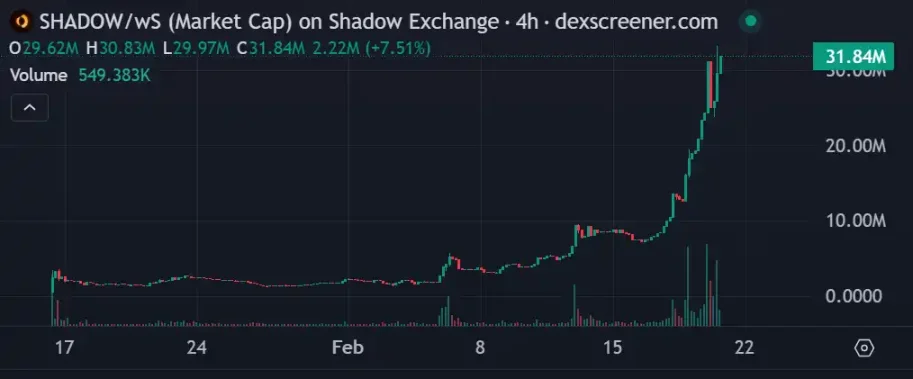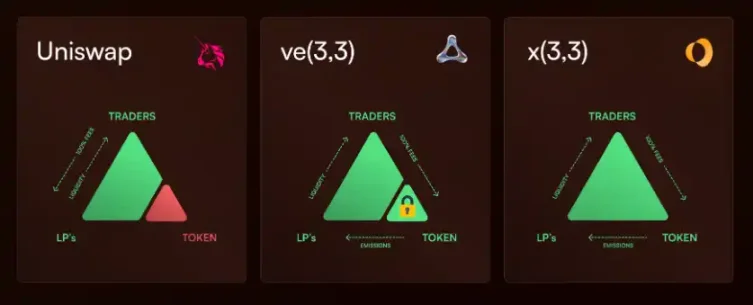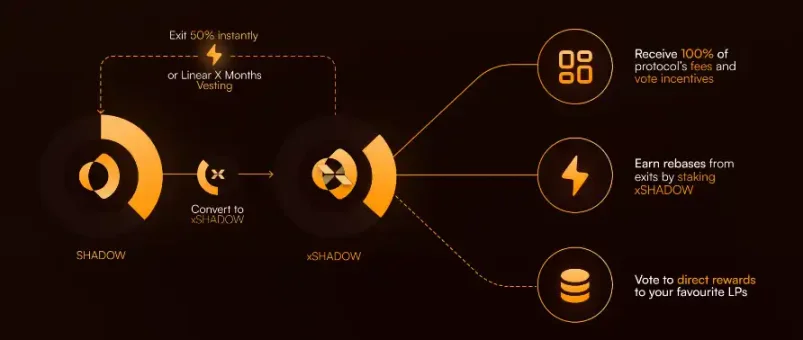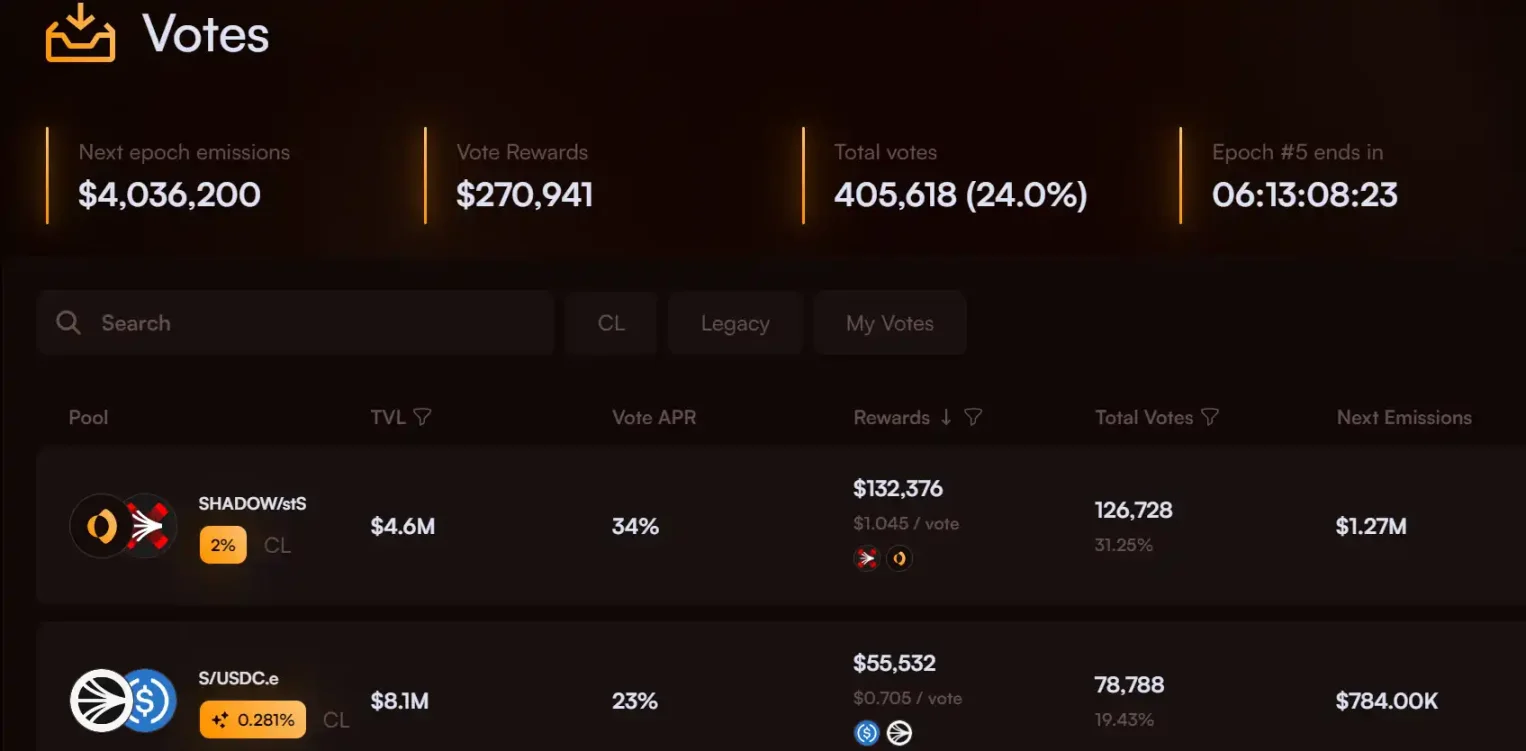Will Shadow Exchange lead Defi Season 2.0?
Author: Penny
Currently, one of the hottest sectors in the Sonic ecosystem is Shadow Exchange. The market value of its native token,$SHADOW, has increased from around US$5M to currently US$31.84M in one week, an increase of more than 500%. Currently, there are 457 liquidity pools on Shadow Exchange, with a trading volume of US$557 million on the 7-day and a maximum trading volume of US$171 million on a single day.

While other chains are focusing on the Meme market and continue to be attracted by various emergencies, Sonic Labs is focusing on the development of DeFi. Sonic has announced a number of new measures to stimulate DeFi projects in the ecosystem, which has also allowed the Sonic chain. TVL has increased by 500% in the past month. In just two months, Sonic achieved a TVL of more than US$500 million from 0. A total of US$110 million in net external funds flowed into Sonic on the chain, of which Solana accounted for the majority, followed by Base and ETH. And the transaction volume of DEX on Sonic also exceeded the US$1 billion mark.
Shadow Exchange is a Sonic native centralized liquidity tier and exchange. In the high-speed, low-cost EVM-compatible Layer 1 ecosystem of Sonic Chain, Shadow Exchange, as one of its core trading protocols, has improved the traditional ve(3,3) model to a x(3,3) incentive model, attracting the attention of a large number of investors.
Familiar (3,3), but with an extra x
The history of decentralized finance has been marked by repeated attempts to resolve the “DEX trilemma”: how to coordinate incentive mechanisms among traders, liquidity providers and token holders. While Andre Cronje’s ve(3,3) model theoretically solves this problem by balancing incentives among all participants, the long-term lock-in period creates a high-friction system that forces users to lock in tokens to participate fairly in the incentive model.
Uniswap focuses on a simple two-party system: traders and liquidity providers (LP). ve(3,3) improves this by appropriately adjusting incentives to the rights of token holders, but obtaining these incentives is unfair and heavily biased towards the agreement.

The x(3,3) model solves these problems, can exit at any time, and can be stimulated to lift the lock restriction. Users can participate in governance by pledging platform tokens and vote on the emission weights of the liquidity pool. Voters can receive fee sharing and additional “bribery rewards” to encourage long-term currency holders to deeply participate in ecological construction. The following figure clearly shows the entire Defi model process:

The $SHADOW token is the most original token and can be freely exchanged with other currencies. The $SHADOW token can be exchanged 1:1 with the xSHADOW token. The xSHADOW token is the core of the entire model. The xSHADOW pledger can vote to directly allocate the reward to the LP pair. At the same time, you can also get 100% of the agreement fee, voting reward and exit penalty through pledge.
In terms of user exits, Shadow implements a unique player-to-player (PvP) re-basing mechanism, in which exit penalties flow to xSHADOW pledgers. When a user exits his xSHADOW position early, 100% of the confiscated tokens will flow to existing xSHADOW pledgers in proportion to his position. In terms of token selection, you can claim the more liquid SHADOW and enjoy the default APY, or the non-liquid xSHADOW and enjoy 2 times APY.
Users can convert xSHADOW to SHADOW at any time: immediately (with a penalty of 50%) or during the vesting period chosen by the user (at a ratio, such as 3 months = 1:0.73). The longer the vesting period, the more favorable the conversion rate. After a complete 6-month vesting period, a 1:1 conversion can be achieved without any penalties.
Voting incentives
xSHADOW holders are rewarded through active participation and voting. When holders vote in favor of liquidity through the scale, they will share proportionately all costs incurred by that liquidity, as well as the additional voting incentives provided by the agreement to attract participation. The main purpose of xSHADOW tokens is to channel the token rewards issued to increase liquidity through voting. This part of the token rewards will be allocated based on the total percentage of votes in the period. For example, 100,000 xSHADOW is distributed in a single period of time. If 10% of all votes are allocated to a SHADOW / USDC pair, that pair will receive 10,000 x SHADOW tokens, which will be allocated linearly to the liquidity providers of the relevant LP pair over the entire period.

Liquidity pledge
Shadow is designed to eliminate friction in the ve(3,3) model, and managing voting positions is one of the biggest sources of friction. After xSHADOW makes a liquidity pledge, it can coin $x33, which simplifies this process through automated voting and reward collection without interfering with xSHADOW’s core mechanism.$ The x33:xSHADOW ratio starts at 1.00:1.00, and will gradually tilt towards $x33 as rewards from fees, voting incentives, and resets accumulate. At the end of each cycle, rewards from fees and voting incentives are automatically sold to increase the $x33:xSHADOW ratio. Although $x33 provides instant liquidity, xSHADOW’s exit penalty cannot be avoided. As a mobile pledge version of xSHADOW, the market price of $x33 will naturally reflect the immediate exit fee structure and cannot be traded at a redemption value lower than xSHADOW.

Shadow adopts a unique player-to-player (PvP) approach that improves on the traditional ve(3,3) anti-dilution model, designed to both protect xSHADOW holders from dilution and encourage them to keep positions and participate in the continued success of SHADOW. Pledges who stay in xSHADOW longer earn more fees, voting incentives, user and emissions exit bonuses, and users can withdraw their positions at any time, ensuring that rewards flow to those who value it most and continue to participate in it. This mechanism not only encourages avoidance of premature exits, but also ensures that remaining participants are rewarded for loyalty and active participation.
With the rapid growth of Sonic Chain TVL (a 13-fold increase to US$357 million since the beginning of 2025) and the endorsement of core developers such as Andre Cronje, Shadow Exchange is expected to rely on ecological potential to become the benchmark for the next generation of DeFi transaction protocols. Shadow Exchange is not only a technical testing ground for Sonic Chain, but also a cutting-edge position for DeFi governance and liquidity innovation, providing a new paradigm for traders, liquidity providers and project parties.



